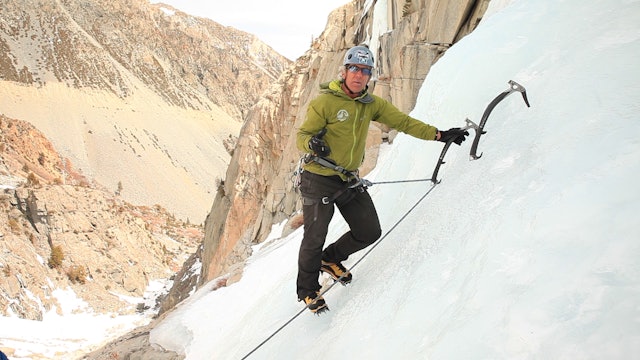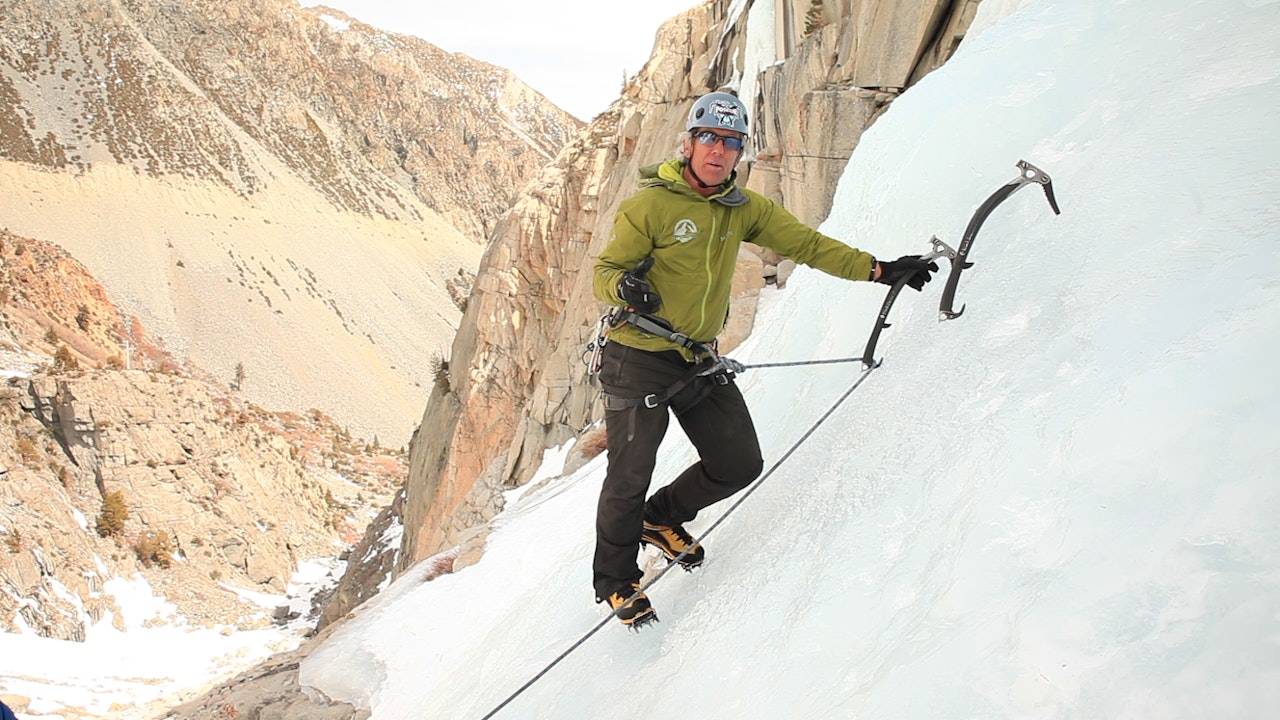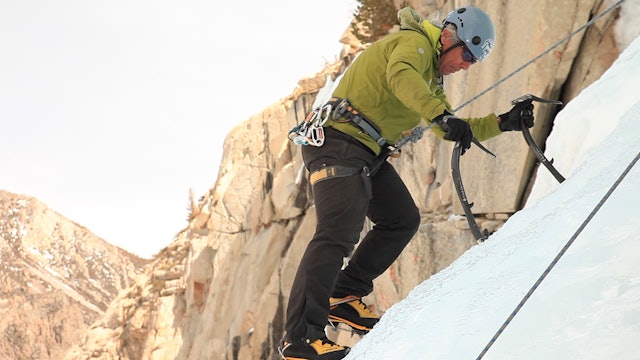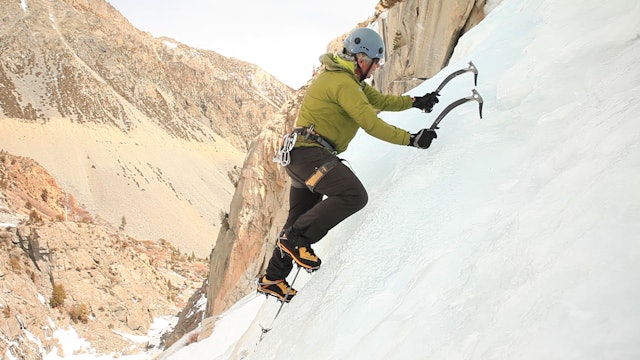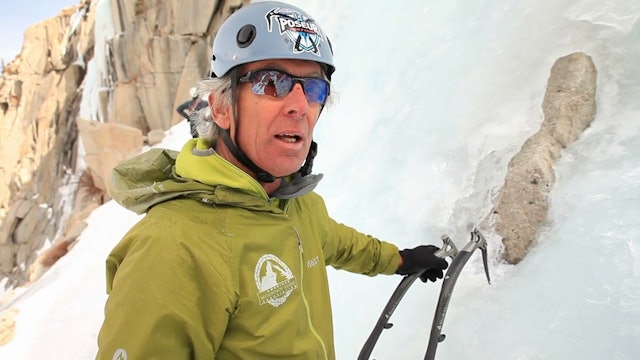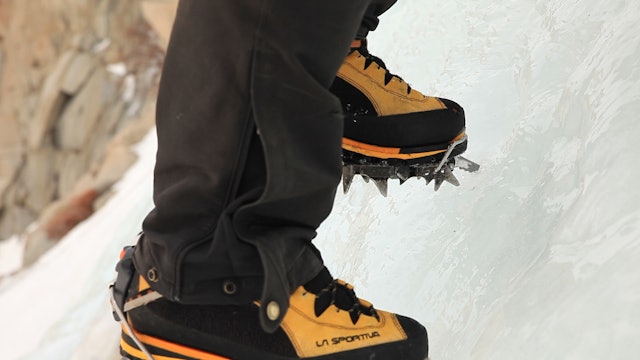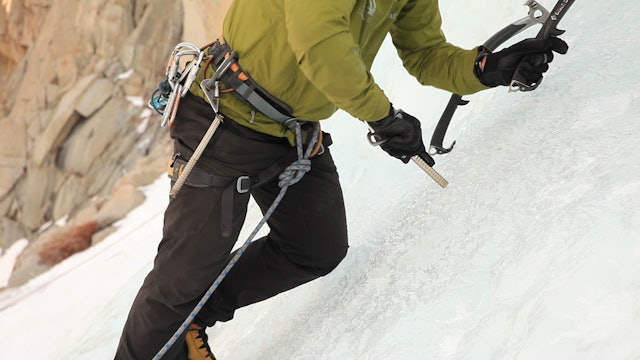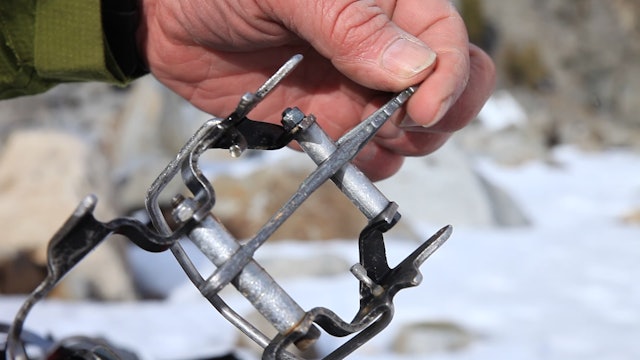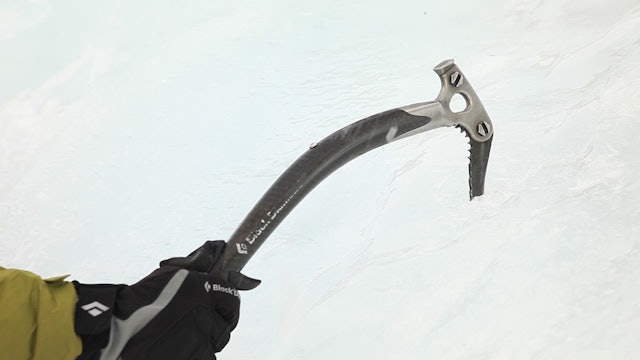Ice Climbing
Welcome to the CTT Ice Climbing video series. Here we cover critical skills for climbing frozen waterfalls, ascending mixed ice & rock terrain, and becoming a well-rounded alpinist.
Ice climbing is considered is an advanced climbing discipline. Before viewing this series, you work through our Sport Climbing, Traditional Climbing, and Multi-Pitch Trad Climbing videos... plus our Alpine & Mountaineering series, as well as our requisite Anchor Building, Belaying, and Rappelling videos.
Take it slower when learning to ice climb than you would with rock climbing. We advocate spending a lot of time top roping before leading because taking a leader fall with all those sharp objects is a scary prospect—and the solidity of ice can be harder to read than granite or limestone.
Let’s get started! Our Ice Climbing video series is below. Be careful, and have fun!
Know & Go with ClimbingTechTips.com
Please remember, climbing is inherently dangerous. Climb at your own risk.
-
Ice Climbing: 1. Technique Considerations
In this video we take a look at basic ice climbing techniques.
1. When starting out, practice on top rope.
2. Tackle lower angle ice routes first to hone good footwork and swinging technique.
3. Take short steps. A high step can potentially throw you off balance and is more fatiguing.
...
-
Ice Climbing: 2. Hand Positions
In this video we look at a variety of ways to grab your ice tool to save energy and make you more efficient.
When swinging the ice tool, the pinky will rest in the holder at the bottom of the handle.
While climbing, however, you may grab above that hand. Matching both hands onto one tool al...
-
Ice Climbing: 3. Alternate vs. Horizontal Placements
In this video we review alternate vs. horizontal placement while ice climbing.
Alternate Placements - In a typical ice climbing scenario, the climber will be using two tools, and the placements of both your hands and feet will be staggered, which limits the number of swings or kicks to gain al...
-
Ice Climbing: 4. Eye Protection
In this video we discuss the wisdom of wearing eye protection when ice climbing.
Ice is a brittle substance. It will fracture and shatter with nearly every swing of your tool. Imagine rock climbing where little shards of rock splinter off every time you grab a hold.
It’s important to wear ...
-
Ice Climbing: 5. Wearing & Adjusting Crampons
In this video we look at how to adjust crampons for ice climbing.
When putting on crampons:
1. Have a seat, put up your foot, and make sure the front welt of your boot is free of any snow. Check that you have the right crampon for the right foot.
2. Adjust the frame size of the crampon...
-
Ice Climbing: 6. Mono-Point Crampons vs. Dual-Point Crampons
In this video we look at two major types of ice climbing crampon styles: mono-point and dual-point.
Mono-point crampons - These have a single point at the front of of the crampon. These require less effort to get the placement deeper in the ice, since there is only one point to be pushed into ...
-
Ice Climbing: 7. Protecting the Rope
In this video we discuss the importance of protecting the rope while ice climbing.
When ice climbing we use several sharp tools, and one soft one: our rope.
One simple technique is to swing the ice tool off to the side, or move the rope aside with your hand before you swing or kick.
B...
-
Ice Climbing: 8. Quick Foot Techniques
Ice climbing can be strenuous. Like in rock climbing, the more we can rely on our feet, the better. In this video, we look at ways to improve footwork techniques on the ice.
1. Setup a top rope on a low angle climb.
2. Ditch the ice tools, and practice climbing (while on top rope) using on...
-
Ice Climbing: 9. Climbing Over Bulges (Mantling)
In this video we look at the technique to climb over bulges in the ice. Climbing over bulges, also known as mantling, can become unnecessarily challenging without proper technique, resulting in what some refer to as the “fish flop.”
1. Do not reach your ice tools too far over the bulge. You wi...
-
Ice Climbing: 10. Hooking With Your Ice Tools
In this video we look at how to “hook” with your ice tools.
Hooking is useful when the ice is thin, or too brittle to swing into, but you can still slot the pick behind the ice and pull on it.
Hooking is also used by the follower, who can draft the leader’s pick holes and save a lot of ene...
-
Ice Climbing: 11. Falling Considerations
In this video we talk about the risk of a leader fall—which is particularly dangerous on ice. Falling with so many sharp items is a bad idea. This is why it is important to top rope a lot, in order to build technical skills well above the level at which you lead ice.
1. Keep your feet away fro...
-
Ice Climbing: 12. Hooking the Lead Rope on the Ice Tool
DANGER! This is an advanced technique that is hotly debated among strong ice climbers, and is NOT relevant to someone watching ClimbingTechTips to learn about ice climbing. It is in no way backed up by standard industry practices, and is certainly not recommended by gear manufacturers who make mo...
-
Ice Climbing: 13. Placing Ice Screws
In this video we look at how to place ice screws. Ice screws offer protection for the lead climber in the event of a fall, the same way cams and stoppers do in rock climbing. Below are the steps for placing ice screws:
Step 1: Turn one foot sideways if possible to help create a more comfortabl...
-
Ice Climbing: 14. Securing the Belayer at the Anchor
In this video we review how to secure the belayer at the anchor. This is similar to rock climbing with a few nuances.
One thing that is different is that you will need to secure the belayer to an anchor at the base of the mountain—this is mainly due to ice being a slippery and, in some ways, a...
-
Ice Climbing: 15. Sharpening Crampons and Ice Tools
In this video we discuss the importance of sharpening crampons and ice tools and crampons.
Crampon:
- All points of the crampons should be reasonably sharp, not only the front point(s).
- Frequency and type of use will determine how often they need to be sharpened. If you are doing a lot of ... -
Ice Climbing: 16. Creating V-Thread Anchors
In this video we review how to create, and rappel from, a v-thread anchor. A v-thread anchor is drilled into the ice in a V shape, using only a small length of cord which is left behind.
Below are the steps for creating a v-thread anchor:
Step 1: Using a longer ice screw (22 cm), drill a ho...
-
The Myth of Chouinard, Robinson & The Evolution of Ice Tools
